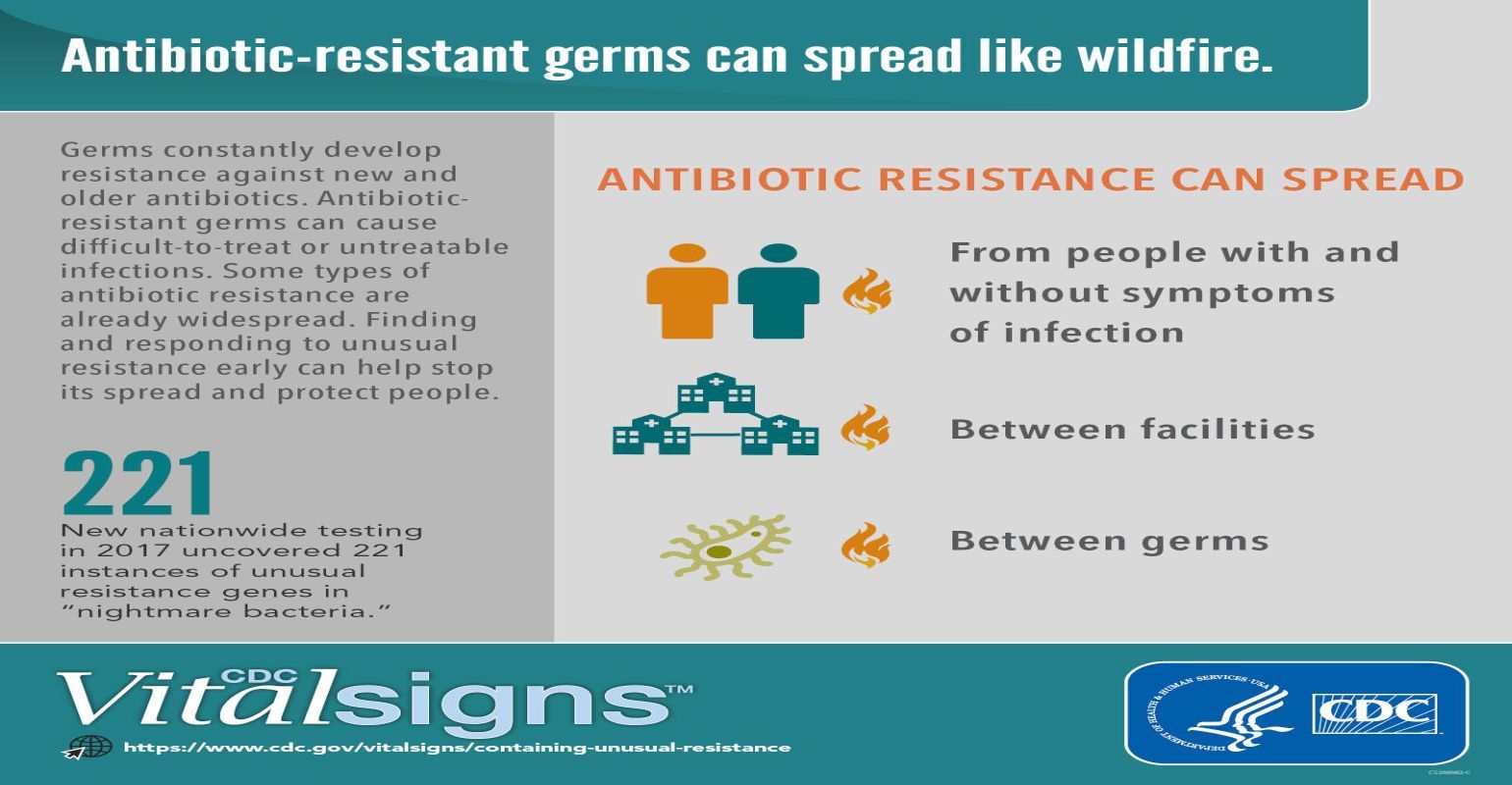Pathogens With Unusual Antibiotic Resistance Widespread in U.S.

Health departments working with CDC’s Antibiotic Resistance (AR) Lab Network found more than 220 instances of germs with “unusual” antibiotic resistance genes in the United States last year, according to a CDC Vital Signs report released today.
Germs with unusual resistance include those that cannot be killed by all or most antibiotics, are uncommon in a geographic area or the U.S., or have specific genes that allow them to spread their resistance to other germs.
Rapid identification of the new or rare threats is the critical first step in CDC’s containment strategy to stop the spread of antibiotic resistance (AR). When a germ with unusual resistance is detected, facilities can quickly isolate patients and begin aggressive infection control and screening actions to discover, reduce, and stop transmission to others.
“CDC’s study found several dangerous pathogens, hiding in plain sight, that can cause infections that are difficult or impossible to treat,” said CDC principal deputy director Anne Schuchat, MD. “It’s reassuring to see that state and local experts, using our containment strategy, identified and stopped these resistant bacteria before they had the opportunity to spread.”
The CDC containment strategy calls for rapid identification of resistance, infection control assessments, testing patients without symptoms who may carry and spread the germ, and continued infection control assessments until spread is stopped. The strategy requires a coordinated response among health care facilities, labs, health departments and CDC through the AR Lab Network. Health departments using the approach have conducted infection control assessments and colonization screenings within 48 hours of finding unusual resistance and have reported no further transmission during follow-up over several weeks.
The strategy complements foundational CDC efforts, including improving antibiotic use and preventing new infections, and builds on existing detection and response infrastructure. New data suggest that the containment strategy can prevent thousands of difficult-to-treat or potentially untreatable infections, including high-priority threats such as Candida auris and carbapenem-resistant Enterobacteriaceae (CRE).
Germs will continuously find ways to resist new and existing antibiotics; stopping new resistance from developing is not currently possible. Recent, nationwide infrastructure investments in laboratories, infection control, and response are enabling tailored, rapid, and aggressive investigations to keep resistance from spreading in healthcare settings.
Other study findings showed:
• One in four germ samples sent to the AR Lab Network for testing had a special genes that allow them to spread their resistance to other germs.
• Further investigation in facilities with unusual resistance revealed that about one in 10 screening tests, from patients without symptoms, identified a hard-to-treat germ that spreads easily. This means the germ could have spread undetected in that health care facility.
• For CRE alone, estimates show that the containment strategy would prevent as many as 1,600 new infections in three years in a single state-a 76 percent reduction.
To read more about the containment strategy and the entire Vital Signs report, visit www.cdc.gov/vitalsigns/containing-unusual-resistance.
Source: CDC